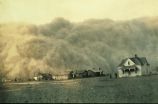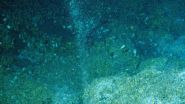ICNC is organised by the Nuclear Cardiology and Cardiac CT section of the European Association of Cardiovascular Imaging (EACVI), a registered branch of the European Society of Cardiology (ESC), the American Society of Nuclear Cardiology (ASNC), and the European Association of Nuclear Medicine (EANM). ICNC 12 is held 3 to 5 May 2015 in Madrid, Spain.
Dr Hashimoto said: "Hemodialysis patients are at increased risk of sudden cardiac death because they often have latent ischaemic heart disease which reduces blood flow to the heart. Latent means they don't have any clinical signs or symptoms, making it very difficult to predict a future heart attack."
He continued: "Ischaemic heart disease should be diagnosed at an early stage so that preventive therapies can be given. But exercise stress testing is inappropriate for diagnosis in hemodialysis patients who have multiple complications including muscle weakness, osteoporosis and peripheral arterial disease."
The current study investigated the ability of 3 methods, alone or in combination, to predict the risk of sudden cardiac death in hemodialysis patients. All 3 methods were performed at rest. The first was a nuclear medicine radioisotope technique called beta-methyl-p-iodophenyl-pentadecanoic acid (BMIPP) scintigraphy1 which measures fatty acid uptake by the heart. ECG2 was used to assess the Q wave and C-reactive protein3 levels in the blood were measured.
The study included 677 patients from the multicentre, prospective cohort study B-SAFE.4 BMIPP scintigraphy, ECG and C-reactive protein assessment was performed in all patients. During the 3 year follow up, 20 sudden cardiac deaths occurred. Patients who suffered sudden cardiac death were more likely to have abnormal BMIPP scintigraphy, abnormal Q wave and a greater C-reactive protein level compared to patients who did not experience sudden cardiac death. There were no differences between the 2 groups in other clinical, laboratory or hemodialysis parameters.
Taken on their own, patients with a BMIPP score greater than 16 had an 11-fold increased risk of sudden cardiac death, while an abnormal Q wave conferred an 18-fold increased risk, and a C-reactive protein level greater than 2.38 mg/dl predicted a 7-fold increased risk. Patients with 2 or 3 of the predictors had a sudden cardiac death risk that was 145 times greater than patients with normal levels on all 3 measures.
Dr Hashimoto said: "The most powerful way to predict sudden cardiac death was to combine the measures. Hemodialysis patients who had 2 or 3 abnormal measures were at 145 times increased risk. In hemodialysis patients, abnormal uptake of BMIPP has an independent and incremental value in the prediction of sudden cardiac death in combination with C-reactive protein and Q wave. This indicates impaired fatty acid metabolism by the heart which could be caused by latent ischaemic heart disease and may lead to fatal cardiac events."
He added: "An abnormal Q wave indicates the presence of previous myocardial infarction or serious myocardial injury responsible for low cardiac output, heart failure and/or potentially fatal arrhythmias. High C-reactive protein levels reflect any active inflammatory reactions such as infection or atherosclerosis."
Dr Hashimoto continued: "For the first time there is a way to predict sudden cardiac death in hemodialysis patients. In a clinical setting, BMIPP scintigraphy can be used in hemodialysis patients who are identified as high risk by abnormal Q wave and increased C-reactive protein. Abnormal BMIPP identifies specific myocardial injury which could be an effective therapeutic target for preventing sudden cardiac death."
He concluded: "Further diagnostic tests should be considered in high risk patients with abnormal BMIPP scintigraphy. Cardiac function assessment for heart failure, coronary angiography for ischaemic heart disease and Holter ECG monitoring for lethal arrhythmias can identify the type of myocardial injury and help physicians select a prophylactic therapeutic strategy against sudden cardiac death in hemodialysis patients."
INFORMATION:
Authors: ESC Press Office
Tel: +33 (0) 4 92 94 86 27
Tel: +33 (0) 4 92 94 77 56
Cell: +33 (0)6 28 84 31 13 during ICNC Congress
Email: press@escardio.org
Notes to editor
This press release refers to the "Sudden death prediction by C-reactive protein, electrocardiographic findings and myocardial fatty acid uptake in patients undergoing hemodialysis: a multicenter prospective cohort sub-study" poster presentation (marked FP22 in the final programme) to be held on 3 May 2015 at 10:00 hours
1Scintigraphy is a diagnostic test in nuclear medicine. Radioisotopes are injected and the radiation emitted is used to create 2D images. Beta-methyl-p-iodophenyl-pentadecanoic acid (BMIPP) is a radioisotope whose uptake is an indicator of fatty acid metabolism in the heart.
2An electrocardiogram (ECG) records the electrical activity of the heart. An abnormal Q wave on an ECG is a sign of a previous myocardial infarction. It detects scar tissue formed after the heart muscle is damaged by a heart attack.
3C-reactive protein is a non-specific test used to detect inflammation in the body. Levels of C-reactive protein are higher in the blood when there is inflammation.
4The full title of the B-SAFE study is BMIPP SPECT Analysis for Decreasing Cardiac Events in Hemodialysis Patients
About the European Association of Cardiovascular Imaging (EACVI)
The European Society of Cardiology (ESC) represents more than 80 000 cardiology professionals across Europe and the Mediterranean. The European Association of Cardiovascular Imaging (formerly EAE) is a registered branch of the ESC. The EACVI section on Nuclear Cardiology and Cardiac CT is dedicated to promoting education, research and clinical excellence in the fields of Nuclear Cardiology and Cardiac CT.
About the American Society of Nuclear Cardiology (ASNC)
The American Society of Nuclear Cardiology (ASNC) is located in Bethesda, Maryland, USA and is committed to excellence in imaging. It represents over 4 500 nuclear cardiologists, radiologists, technologists, scientists, and academics all over the world.
About the European Association of Nuclear Medicine (EANM)
The European Association of Nuclear Medicine (EANM) is the umbrella organisation of nuclear medicine in Europe and represents the sector in relation to European institutions.
Information for journalists attending ICNC 12
ICNC 12 takes place 3-5 May 2015 in Madrid, Spain, at the Hotel Auditorium Madrid. The full scientific programme is available here http://www.escardio.org/Congresses-&-Events/Upcoming-congresses/ICNC/Scientific-sessions/Scientific-programme
Press registration is conducted via My ESC (Individual Registration / Press):
Free registration applies to press representatives upon receipt of valid credentials and a fully completed embargo form. (to be sent to press@escardio.org)
Credential: either your ID press card or letter of assignment with proof of 3 published articles (recent/medical)
The ESC Press Office will check your credential and confirm your press accreditation by email.
Press registration is not available to Industry or its Public Relations representatives, event management, marketing or communications representatives
The decision of the ESC Press Office is final regarding all press registration requests.
The ESC Press Office will verify the documents and confirm by email that your Press Accreditation is valid.
Media enquiries: press@escardio.org or +33 (0)6 28 84 31 13 END


